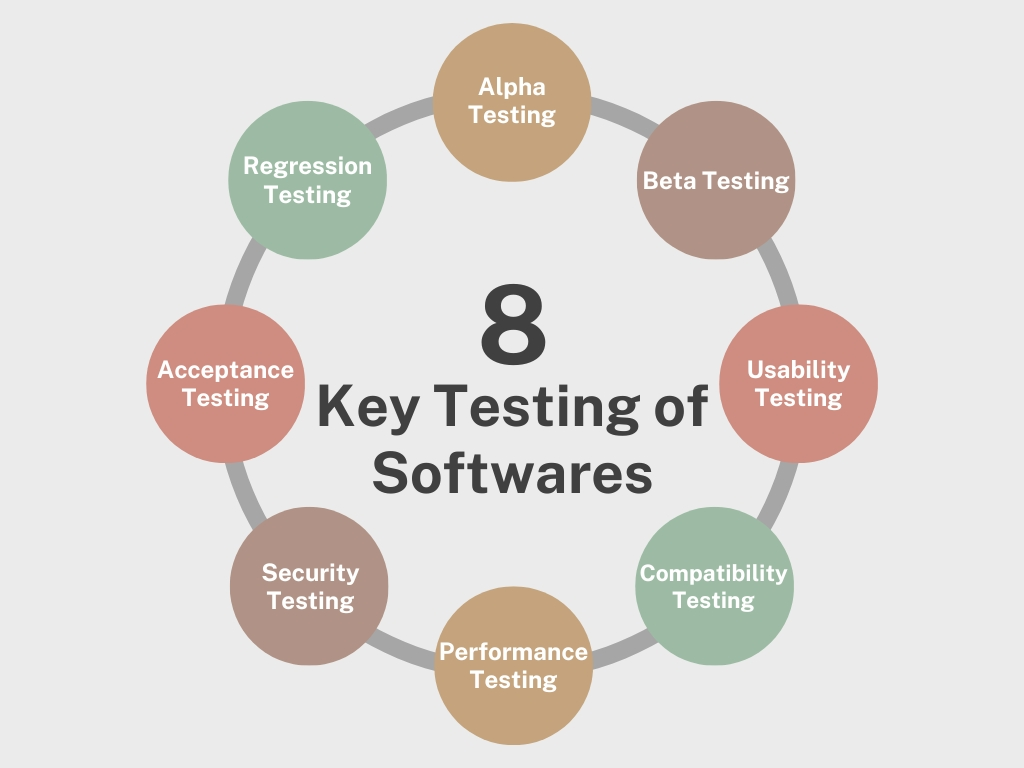Introduction
A software is a collection of computer/smartphone programs and related data that provide hardware instructions on what to do. Through programmed computer programs and the data, they contain, software controls, interfaces with, and provides functionality on hardware, bringing to life the things we use on a daily basis. Software makes it possible for us to use computational equipment for practical and innovative purposes.
From a user perspective a good software should have certain qualities to gain user base and to stay ahead in competition. These qualities include user friendliness, easy to navigate user interface, fast loading, reliability, security, scalability and cross-platform functionality.
Achieving this level of finesse requires rigorous testing of software at the developers end. While some testing is done before launch to make a software perfect, a number of tests needs to be done after launch to improve the user experience. In this case study we will go through the important (read unavoidable) pre and post launch tests of a software to ensure quality and reliability.
Importance of Software Testing
- In February 2014, Toyota Motor recalled 1.9 million latest Prius models worldwide due to a programming error that caused the car’s gas-electric hybrid systems to shut down.
- In 2022, there was a data breach that happened at T-Mobile that risked the personal data of 50 million users from the company server.
These examples speak for themselves why rigorous software testing is required before and after launch. Such failures not only hurt business and damage reputations, but also can take the lives of people. For example, in 2019 a Boeing 737 MAX aircraft of Ethiopian Airlines crashed killing 157 people onboard. Later investigations found a glitch in aircrafts MCAS software system that led to uncontrolled nosedive of the aircraft.
Software testing is necessary to ensure quality standards, performance benchmarks, safety and customers’ demands are met successfully.
Key Testing of Software
As mentioned above a number of tests are involved in the software development lifecycle. For ease of understanding, let’s check out some pre-launch tests first followed by tests conducted post-launch.

1. Alpha testing:
Alpha testing is an early stage of software testing performed by internal developers and quality assurance team before releasing the software to actual users. This test usually takes place after design specifications are finalized but before the product is declared beta ready.
Focusing on core functionality, this test is intended to uncover bugs and usability issues, which includes identifying crashes, interface issues, data flows, and boundary conditions. The typical insights provided by the Alpha testers are refining suggestions, usability issues and feedback on other components that need enhancement.
2. Beta testing:
Beta testing is a later stage of software testing after alpha testing, in which a select group of external users test the software in real world scenarios before its commercial release. These external users are selected from the software’s targeted demography.
Beta testing is carried out by testers in their own hardware, computing environments and use cases. This exposes how the software works in the real world, particularly identifying issues related to software usability, workflows, and user interface problems.
3. Usability testing:
Usability testing evaluates the user experience and ease of interface of the software application. Focused on user experience, this test assesses the degree of convenience (or inconvenience) an user might experience while navigating within the software.
The main interfaces and user touch points like navigation, workflows, options and menus are rigorously evaluated via test scenarios. The observations and user difficulties faced in the tasks performed are utilized to enhance the navigation approach, simplify options and reduce overall effort.
4. Compatibility testing:
Compatibility testing checks how well the software performs on different hardware, operating systems, databases, network environments, web browsers and more. Testing is performed on a matrix made up of combinations of different hardware (e.g. 32/64-bit systems), software infrastructure (e.g. Windows 11, macOS) and other dependencies that the software claims to support.
This test also evaluates the portability of the software, which means how easily the software can be transitioned from one system environment to another, for example, from an on-premises server to the cloud. Also, the software compatibility with different web browsers (e.g. Chrome, Firefox etc.), devices (desktops, tablets etc.) are also part of this test.
5. Performance testing:
Performance testing evaluates the speed, responsiveness, stability, reliability, scalability and resource usage efficiency of a software application under heavy and peak load conditions. The test environment is configured to simulate expected real-world load including number of concurrent users, high data volumes, and network bandwidth utilized.
However, software might face a situation of sudden user influx that is why performance testing also includes stress taking capability of the software which means load exceeding expected capacity limit, and spike testing, that is sudden spike in load to verify application stability. Performance is benchmarked against key metrics like response times, requests served per second, processor utilization etc. using tools. Measured metrics are compared across software versions to track improvements.
6. Security testing:
Security testing of software refers to testing software applications and systems to identify vulnerabilities, risks, and threats that could compromise the confidentiality, integrity, and availability of data and functions. It involves actively testing the software by simulating attacks to expose security flaws and weaknesses before the system goes into production.
Security testing evaluates aspects like authentication, authorization, data security, infrastructure security, business logic flaws, etc. to determine if unauthorized access or malicious activity is possible. The purpose of this test is to improve security by identifying and addressing risks proactively, before hackers or malicious actors can find and exploit vulnerabilities.
7. Acceptance testing:
Acceptance testing verifies that the completed system meets the predetermined specifications, business requirements and objectives outlined by the customer. To put simply, this test determines whether the software is acceptable by the customer. Usually done when the software is ready by every means, this test tries to detect the gaps that needs to be resolved before launch.
The goal of acceptance testing is gaining confidence that the software meets business and user needs and is fit for purpose. This provides the final quality gate before the system gets deployed for actual use.
8. Regression testing:
Regression testing is done to ensure that the expected behavior and output of the system remains the same as it evolves over time. This test is usually run by the quality assurance team after introducing modifications such as feature enhancements, configuration changes or bug fixes to ensure that the basic functionality of the software should not be hampered due to newly introduced changes.
Post-Release Testing
The term “post-release testing” refers to testing that is done on a client site, in a production environment, or after the program has gone live. While it is true that the developers and quality assurance team extensively test the software during the development phase for all possible issues, it is still a matter of fact that the testing of the software has not been performed in the real or production environment. This leaves a chance of certain gaps in the infrastructure and performance of the software. That’s why post-release testing is important.
The common issues post-release testing solves are as follows:
1. Data differences:
The data that is accessible in test and production environments could differ. This may lead to test environments missing some corner-case concerns. Although the software application has been tested using a variety of data sets, the QA team cannot ensure that the tested application is prepared for any unexpected or unwanted data values that may arise in the product environment.
2. Deployment issues:
It’s possible that certain aspects of the real or production environments—such as configuration settings, network configuration, database connectivity, and other issues—are absent from the test environment, or site where the product was successfully deployed and installed to conduct testing activities. Your release can be more vulnerable to deployment problems if your organization uses a manual build deployment procedure.
Conclusion
The pre and post launch software testing stands as a safeguard against any possible software failure or glitches. In this competitive market landscape even a minor inconvenience at the user end can result in major setbacks for the business. Hence, it is recommended to run all the testing mentioned in this article before and after launching your product. However, it is a tedious task, and you need an expert team of developers and quality assurance people to test your software.
This is where Ikana comes to your aid, by helping you transition from the development to launch phase through our Plug and Play Business Team. Feel free to contact us and the successful launch is assured.





